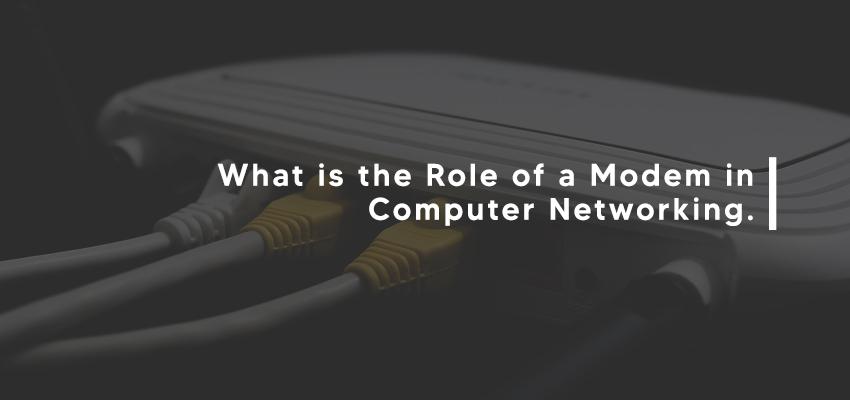
What is the Role of a Modem in Computer Networking.
Posted June 17, 2020, 9:18 a.m. by Emil S.A modem transforms data into a signal so that it can be sent and received over a cable, phone line, or satellite connection. A modem is an asynchronous tool that is capable of transmitting data in the form of small packets. Once the data is received, the system that secures it takes the packets and reassembles the data.
Before, when the phone line was the best way to access the Internet, the modem transforms the data from analog to digital for two-way communication between networks. With today's high-speed digital modems, there is no need to do the analog to digital conversion.
The term "modem" is formed from the combination of modulation and demodulation. These are the technical terms used for the conversion that happens between analog and digital signals.
A Brief History
The first modems were made to transform digital data so that they can be transmitted and received over telephone lines. Back then, the speed is measured in units called baud derived from Emile Baudot. As advances happened in technology, the speed became measured by bits per second (bps).
Dataphone was the first modem, and it was released in 1960 by AT&T. The first modems that were released commercially functioned with a speed rate of 100 bps. They were first used by the news services, the US Department of Defense, and some large companies.
In the late 1970s, modems became a more familiar product to consumers thanks to news services that were built on the early infrastructures of the Internet. During this time, Dale Heatherington and Dennis Hayes released the 80-103A modem.
When the World Wide Web became popular in the mid-1990s, the dial-up modems became the primary access to the Internet in a lot of households. But starting in the early 2000s, dial-up modem users have converted to the broadband modem because of its faster speed and more advanced technology.
These days, computers do not come with a dial-up modem. If you want to use a dial-up modem these days, you will have to purchase and install it yourself.
Types of Modems
Dial-Up Modems
As mentioned earlier, dial-up modems change data from analog to digital so that the data can be transmitted from the telephone lines to the computers. The external dial-up modem is plugged into a telephone line at one end and a computer on the other end. The internal dial-up modem is integrated into the network by the computer makers.
When you use a dial-up modem to connect to a network, you will be hearing sounds. It is similar to the sound you hear on the phone when you are dialing a phone number, then you will be hearing a squealing noise. This sound pattern will verify that the connection process is taking place.
The more modern models of dial-up modems can send data at 56,000 bps maximum rate. However, public telephone networks have a limit on their modem data rates, which can operate at a maximum speed rate of 33.6 kbps.
Broadband Modems
This type of modem is being used for cable Internet or DSL and uses advanced signaling methods. As a result, you get faster network speeds compared to what you get with dial-up modems. This is why they are also known as high-speed modems.
The external broadband modems are plugged into a home gateway device or broadband router on one end, and the cable line or external internet interface is on the other end. The gateway or router leads the signals to all the devices in your home. Most Internet service providers give their customers modem hardware. Some Internet service providers charge a monthly fee while others include it for free as part of the package.
